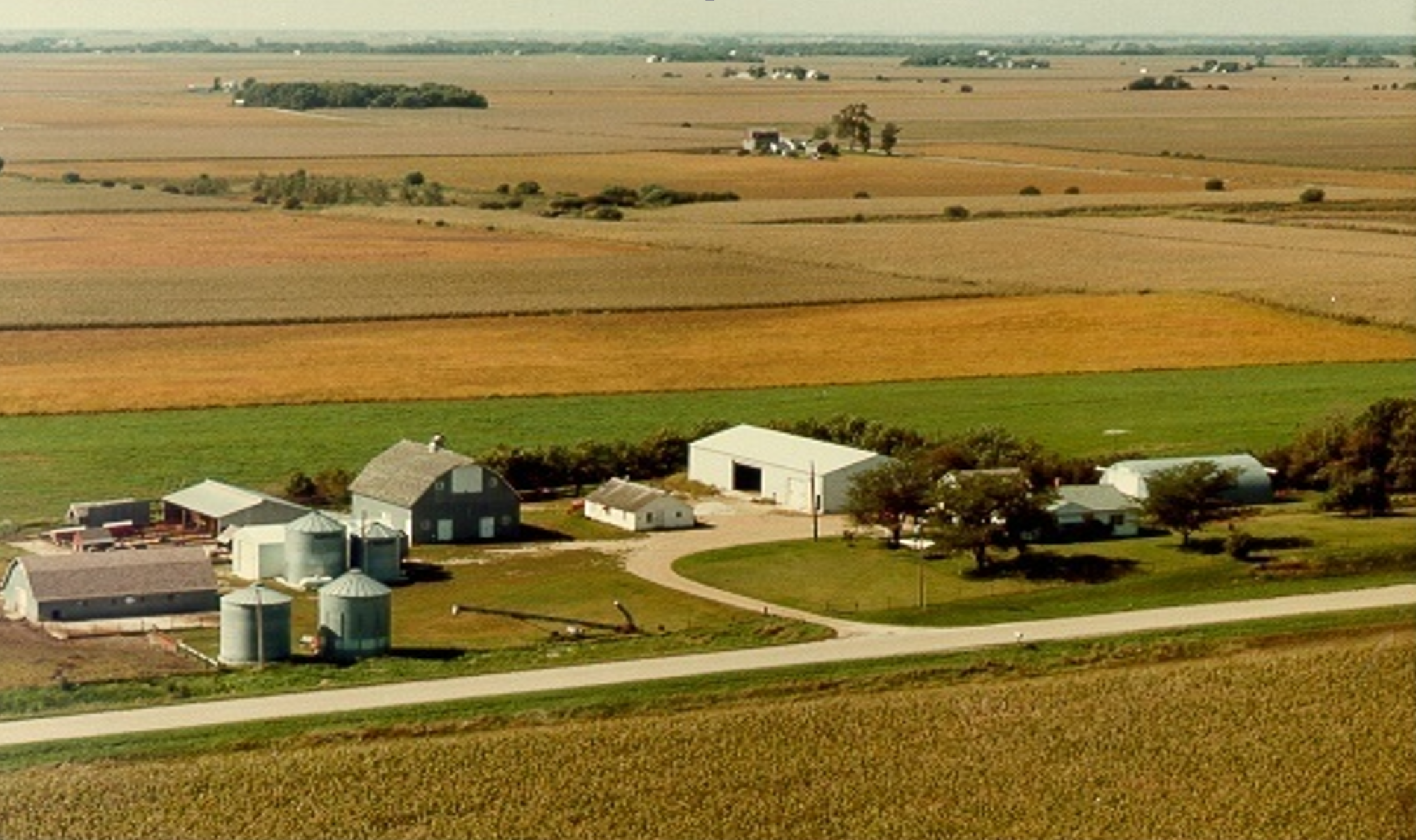Plant a Garden and Harvest the Many Benefits it Yields
Gardening was a major interruption growing up on the family farm near West Bend, Iowa.
Despite our best intentions, tending to the garden was the chore that always got squeezed in-between the more important tasks of life on a farm – the ones that truly paid the bills, including growing soybeans, corn, oats and hay and raising hogs and cattle. Those tasks were the headliners, followed at a fair distance by yardwork and housework.
The family farm, West Bend, Iowa — circa 1985 (garden just visible north of home, center right of picture).
Then came the garden.
Make no mistake, its low ranking on the chores-that-needed-doing depth chart in no way minimized its importance. That was obvious from the land area our gardens consumed. Like most farms in our neck of the woods, a garden wasn’t enough. You needed two. One was located directly north of the farmhouse, with adequate land area to produce enough vegetables to make a Ruby Tuesday buffet jealous. The second was on the south edge of the building site. It offered melons, squash, pumpkins and sweet corn ample room to stretch their legs and thus, a bountiful harvest.
Planting, weeding, spraying, picking and occasionally watering the garden (and keeping rodents at bay) were typically done at the crack of dawn, after supper or on Sundays (which, come to think of it, was supposed to be a day of rest!). Thinking back, perhaps my apathy for gardening as a youth was because it was a chore that needed done when my siblings and me were most tired (or just wanted to go fishing or host a neighborhood softball game).
Fast forward roughly 35 years. Today, gardening is something I absolutely treasure. I invest in seed, fertilizer, pavers, topsoil, compost, fencing, water and trellises – plus a good chunk of time – to grow tomatoes, green beans, cucumbers, potatoes, lettuce, beets and sweetcorn. No longer on the farm, space limitations require I maximize every square inch of the plot I have so I coax plants to go vertical.
And as often as possible, I involve my children. That’s easier said than done given their many activities and my selfish impulse to utilize the garden as a physical and mental escape.
Yet, whenever they lend a hand, I’m reminded how incredibly rewarding it is to get dirt under our fingernails. Gardening tasks are numerous and varied: cutting seed potatoes into thirds for planting, watering planters, digging shallow trenches and delicately depositing seeds into them and positioning cages and trellises so plants can climb. Then there’s weeding, scouting, pruning, picking and sorting, all the while keeping an eye on the weather and critters.
Cucumbers making their appearance before being replanted in the backyard garden.
Despite our best intentions, gardening doesn’t always go according to plan. In fact, growing things can be downright exasperating. Bugs are relentless. Mold and disease can overpower. Heavy rains, wind and hail do damage. Weeds always demand the right-of-way. And rabbits, squirrels, striped gophers and June beetles demand their share.
Welcome to gardening which, come to think of it, is a lot like life as a farmer (just on a smaller scale).
Which is why gardening is so worthwhile, especially for our children.
Most children will never experience farm life. But gardening is a close second when conveying important life lessons. Growing and harvesting food takes commitment, patience, problem-solving, communications and work ethic. It assigns value to time and effort. It’s provides a stark reality-check that food indeed comes from soil and toil (not the refrigerator, drive-thru window or grocery store), is of tremendous value and should never be wasted. And it teaches us to be caretakers all living things, that we’re never really in charge and that farmers deserve our eternal respect and gratitude.
Tomatoes ripening in my backyard garden in Waukee (August 2019).
More than that, gardening is a reminder that rewards accompany tasks worth doing. Throughout the year, we savor the fruits (and vegetables) of our labor when gathered around the kitchen table. Like a fresh garden salad, savory sweet corn, cooked beets, steamed green beans or cucumber relish during the summer. Or, when fall and winter arrive, savory mashed potatoes with just a dash of butter, salt and pepper and homemade chili made special because it includes the tomatoes we made sure to grow, harvest and store before the first freeze arrived.
Yes indeed, I’m convinced the world would be a much better place if more families gardened.
If that sounds overly simplistic and naïve, don’t take my word for it.
Grab a shovel and seed and get to growing one this spring. Then, in no time flat, be prepared to harvest the bountiful benefits and blessings (not to mention great food!) it offers all year long!
Editor’s note: this column was originally published in the Spring edition of Fresh Pickings Magazine, a seasonal publication of the Iowa Food & Family Project (www.iowafoodandfamily.com).



